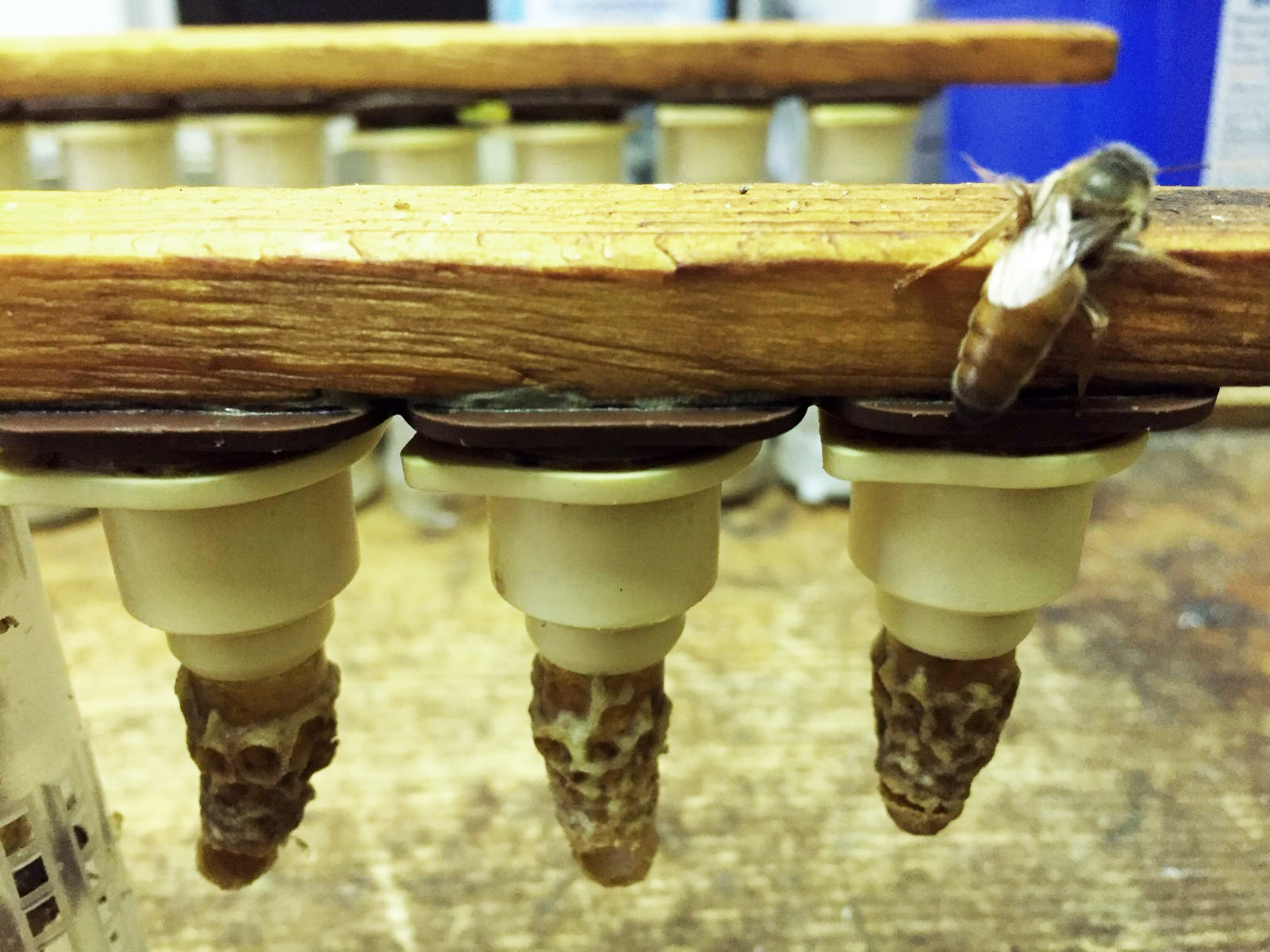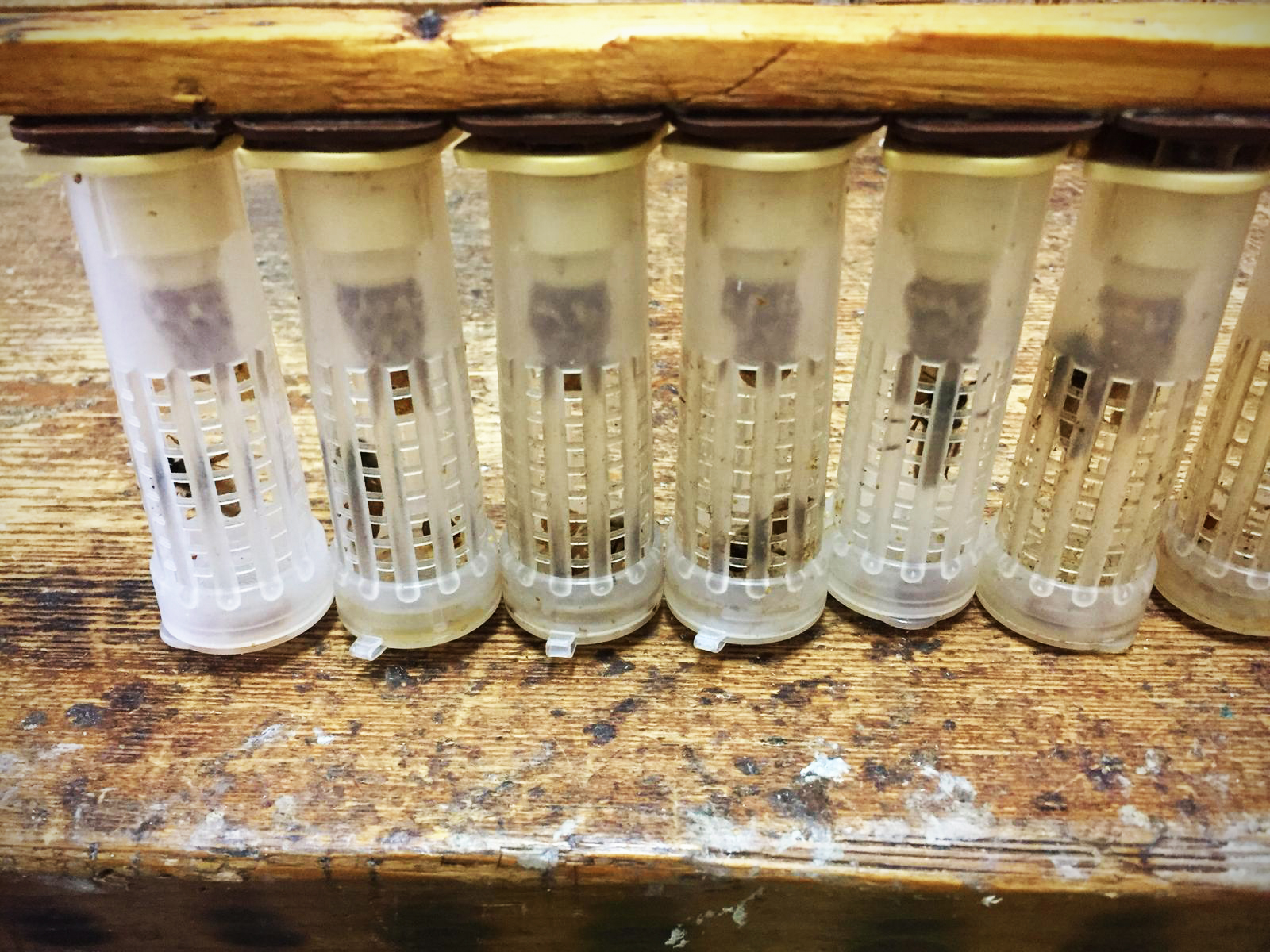To any swarm of bees, even full-bodied and healthy, can happen an unpleasant inconvenience: to remain an orphan of the Queen Bee. The introduction of the Queen bee into the swarm will ensure long life to the family!
But how come a swarm remains an orphan? The reasons can be multiple.
Let's see some:
- seniority of the Queen Bee: As in every family, there comes a time when the founder must leave us. The exact same thing happens in a bee hive. After a number of years, the Queen bee begins to accuse an insufficient production of real pheromone, only to die. If, therefore, the worker bees have not started to deal with the real cells with the right advance, we must introduce a new queen bee.
- queen Bee disease: Like any animal, even the bee may become ill due to viral attacks such as Varroa. Conversely, the Queen bee may not survive even for a disease not well identified and therefore die for incorrect treatment by the operator.
- non-fertilization of the old queen Bee. It may happen that the Queen bee is unable to fecunate for various reasons, among which:
- bad weather conditions: Low temperatures, heavy rainfall, but also high temperatures influence, and not a little, the success of fertilization between bees.
- absence of drones: The queen bee may find it difficult to trace the drones of her own family. Without them, the mating of the bee is not possible.
- failure to return to the Queen bee hive.
- killing the Queen bee: The whole family can become the enemy of the matriarch. In a period of high stress for example, you have to be particularly careful in opening the hives gently. If the Queen unfortunately fell to the bottom of the hive, she could be attacked and killed.
We now move on to the actual introduction of the Queen bee (Virgin or already fertilated). The most delicate part of this phase is theacceptance of the bee by the orphan Swarm.
For a higher probability of acceptance, it is advisable to allocate the Queen bee to an orphan family with a deficient broate (but not totally absent to simulate a normal life cycle).
A reduced amount of hatching "will help" the new queen Bee to be recognized: Slowly the worker bees, influenced by the pheromone of Queen novella, will remove the actual cells already present because they are, by now, superfluous.
If not, with much brooed the Suckler Bees They dedicate themselves to the formation of real cells focusing on the birth of a new queen. It goes if in this case the orphan bees would see as enemy and stranger the newly introduced queen Bee.

Further advice: Theacceptance of the Queen Bee is facilitated in a little numerous family. In the event that at the time of the arrival of the new queen bee there were a good broed and formed cells, the population could not eliminate all the "enemies" of the new queen bee, but indeed, believing themselves to be numerous, they could work to give birth to them. This is because the spread of the "real" pheromone throughout the hive would be more complicated and sluggish. At this point, the group composed of Queen and escorts just introduced could swarm independently!
Do not underestimate the age of the workers of the orphan family: adult bees could not look good eye on a new queen bee, making it more complicated acceptance than expected. You need to be careful when you check the actual acceptance: doing it too soon from the moment of theintroduction of the Queen Bee, could stress the Queen and the Swarm by frustrating all the work. Not to take for granted obviously the circulation of pollen, nectar and honey within the family. The amount of pheromone transmitted from one bee to another is proportional to the amount of food transported, resulting in acceptance of the new queen.
Finally, among the variables involved in the introduction of the Queen Bee we must consider the period. How come? The reason is simple: not all types of queens are available throughout the year. During the period from August to October in fact the introduction is practiced thanks to theVirgin Queen Bee!
"You have to recreate as much as possible the best condition for the new queen bee to be considered IndispensableFrom the entire hive. Only then will you have complete acceptance."
See the tabs for Our products To learn more about the Queen to be introduced more suited to your needs.


 English
English  Italiano
Italiano  Estonian
Estonian  Finnish
Finnish  Français
Français  Deutsch
Deutsch  Latvian
Latvian  Norsk
Norsk  Polski
Polski  Română
Română  Español
Español  Svenska
Svenska